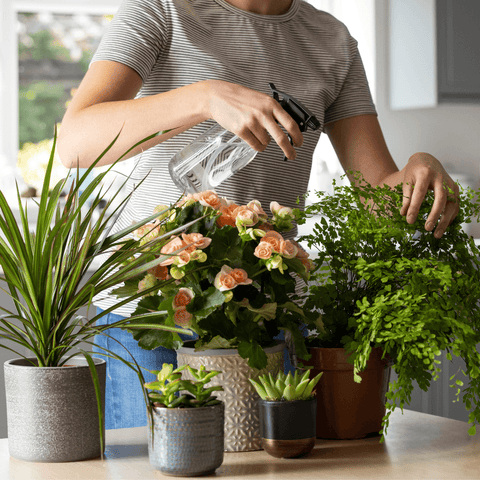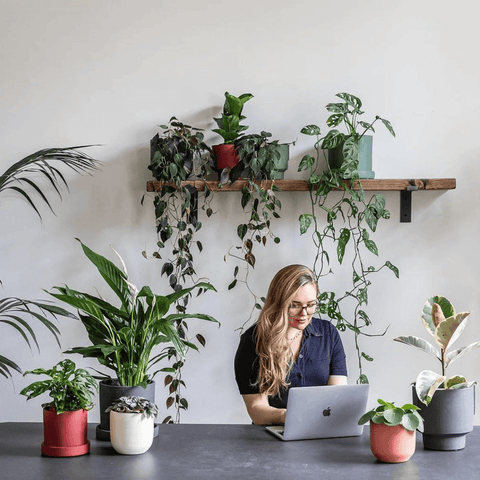If you’re a plant enthusiast, you know that keeping your houseplants healthy and vibrant is a rewarding experience. But dealing with insects is one of the biggest challenges you’ll face as a plant parent. One pest in particular that can cause problems for your houseplants is the fungus gnat.
Fungus gnats are small insects with long, dark legs, gray bodies, and wings. They feed on fungus and plant material, and their larvae can quickly devour the roots and stem of your beloved houseplants. That’s why it’s essential to identify and get rid of fungus gnats before they can cause significant damage.
In this article, we’ll explain what fungus gnats are and how to identify them. We’ll also discuss how to get rid of them, including removing the source of the infestation, increasing air circulation, and using insecticidal soap or neem oil. Finally, we’ll look at ways to keep fungus gnats away in the future.
What are Fungus Gnats?
Fungus gnats are tiny, dark-colored flies found near houseplants. They contain long, slender legs, tiny wings, and a blackish-grey body. Fungus gnats feed on fungi, organic matter, and plant roots, typically measuring 1/16th and 1/8th of an inch long.
Adult gnats will often fly near the soil's surface, and the larvae will live in the soil. Fungus gnats breed and reproduce rapidly, especially in wet and humid soil. They’re most commonly seen in overwatered and potted plants and are particularly drawn to areas with high levels of decaying organic matter.
Fungus gnats are not considered a major threat to the health of plants, as they typically do not cause significant damage. However, they can be a nuisance and indicate poor plant care. Overwatered or diseased plants are much more likely to attract fungus gnats and other pests. Left untreated, fungus gnats can quickly multiply and spread, potentially leading to an infestation.
The best way to protect your houseplants from fungus gnats is to take proper care of them. Ensure to water the plants in moderation and avoid overwatering, as this can create the ideal conditions for fungus gnats to breed. Additionally, check the soil regularly for signs of fungus or poor drainage, as these can attract gnats.
By following these steps, you can ensure your houseplants remain healthy and free from fungus gnats.
Remove the Source of the Infestation
Removing the source of the infestation is the key to ridding your houseplants of fungus gnats. Gnats lay their eggs in the soil, so it is important to keep the soil in your houseplants dry and warm. Watering your houseplants less frequently and making sure the soil doesn't stay wet for too long will help to reduce the chances of fungus gnats taking over. Additionally, use well-draining potting soil and make sure your plant containers have drainage holes to let excess water out. If you already have a gnat infestation, you can discard the soil in your houseplant and start afresh with sterile soil or a soil-less potting mix. Finally, check your houseplants regularly for signs of fungus gnats and their larvae. Prompt action can help keep your plants healthy and prevent any further damage.
Increase Air Circulation Around Your Plants
Fungus gnats thrive in moist, humid environments, so if you want to keep them away from your houseplants, it's important that you keep the air around your plants from becoming stagnant. Increasing air circulation can help to prevent these pesky gnats from invading your plants and messing with their care.
A few simple steps that you can take to improve the air circulation for your plants include:
• Moving your plants to a well-ventilated area, or to a spot in the house where the air circulates more freely
• Finishing off your plant care routine with air circulation in mind. For example, avoid setting your plants in a drafty window, or in an area prone to cold winds and drafts
• Keeping an eye on the humidity levels in the room and adjusting them with a fan
• Adding a grow light stand to create more air circulation around your plants
By increasing the air circulation around your houseplants, you can help to keep the fungus gnats away and ensure that your plants get the care they need.
Use Insecticidal Soap or Neem Oil
Insecticidal soaps and neem oil can be effective in controlling fungus gnats. Both products have the benefit of being less toxic than traditional chemical insecticides, and they can be applied directly to houseplants without causing any lasting damage to the plant. When applying insecticidal soap or neem oil, be sure to spray all of the leaves and the soil of your houseplants. It is ideal to apply the product after watering, as the moist soil will help the ingredients to spread and be more effective. After applying the product, regularly check for any remaining gnats on the plants and re-apply as needed for complete control of the pest. With regular application of insecticidal soap or neem oil, the fungus gnats infesting your houseplants should be successfully eliminated with minimal harm to the plants.
Conclusion
In conclusion, protecting your houseplants from fungus gnats is important and should not be taken lightly. By understanding what fungus gnats are and how to identify them, it is possible to take the necessary steps to get rid of them. This includes removing the source of the infestation, increasing air circulation, and using insecticidal soap or neem oil. With the right knowledge and resources, you can easily keep your houseplants safe and healthy.





Comments (0)
There are no comments for this article. Be the first one to leave a message!